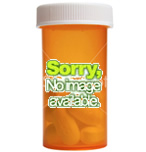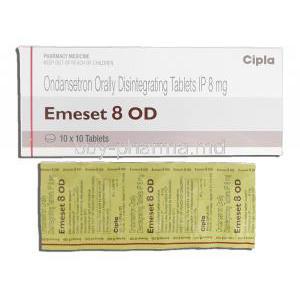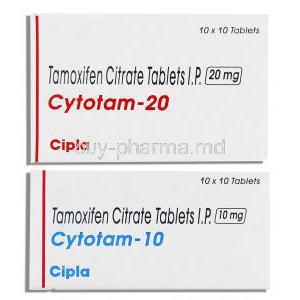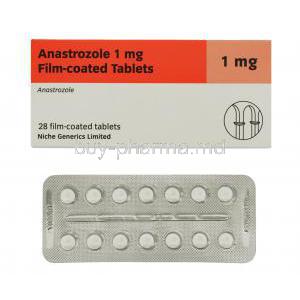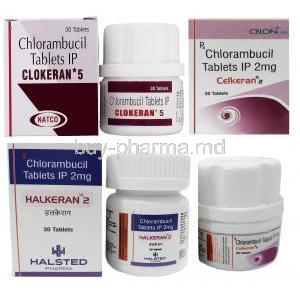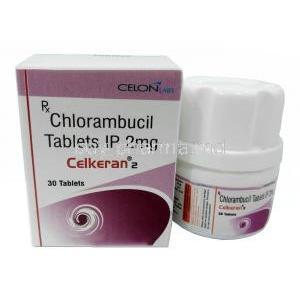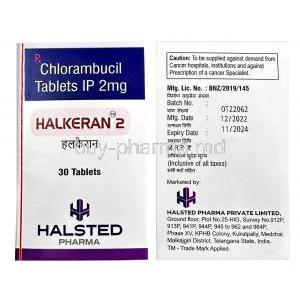Introduction to Alkeran (Melphalan Injection)
Overview of Alkeran as a Chemotherapy Medication
Alkeran, containing the active ingredient Melphalan, is a potent antineoplastic agent used primarily in the treatment of hematologic and solid malignancies. As a cytotoxic alkylating agent, it exerts significant therapeutic effects by targeting and destroying rapidly proliferating cancerous cells.
Historical Development and Approval Status
Originally developed in the mid-20th century as a derivative of nitrogen mustard compounds, Melphalan was approved for medical use based on its proven efficacy against multiple myeloma. Over decades, its clinical utility has expanded through rigorous oncological studies and global regulatory endorsements.
Formulation Types: Oral vs Injectable
Alkeran is available in two primary formulations:
- Oral tablets – Suitable for maintenance or low-dose regimens.
- Injectable solution – Preferred in high-dose or inpatient oncology settings due to faster systemic absorption and controlled delivery.
Indications for Choosing the Injectable Form
The injectable form is typically chosen for patients with impaired gastrointestinal absorption, for those undergoing conditioning prior to hematopoietic stem cell transplantation, or when precise dosing and rapid onset of action are required.
Medical and Off-Label Uses of Alkeran
2.1 FDA-Approved Uses
- Multiple Myeloma: Employed both as initial induction therapy and for palliative management, particularly effective in combination with corticosteroids.
- Ovarian Carcinoma: Utilized in advanced-stage epithelial ovarian cancer when platinum-based therapy is contraindicated or as second-line intervention.
2.2 Off-Label Uses of Alkeran Injection
Beyond its primary indications, Alkeran demonstrates efficacy in several off-label settings:
- Malignant Melanoma: Regional perfusion therapy for limb-confined disease.
- Amyloidosis: Used in combination protocols to reduce abnormal protein deposition.
- Refractory Breast Cancer: As a second or third-line agent in resistant cases.
- Bone Marrow Ablation: High-dose melphalan is integral in preparative regimens before autologous stem cell transplantation.
- Chronic Myelogenous Leukemia (CML): Occasionally used in patients intolerant to tyrosine kinase inhibitors.
Mechanism of Action: How Melphalan Injection Works
Melphalan belongs to the nitrogen mustard class of alkylating agents. Its mechanism involves:
- Alkylation of DNA at the N7 position of guanine bases.
- Formation of DNA cross-links, both inter- and intra-strand, leading to inhibition of DNA replication and transcription.
- Selective toxicity to rapidly dividing neoplastic cells.
- Secondary immunosuppressive effects, beneficial in certain hematologic disorders.
Composition and Active Ingredients
Each vial of Alkeran injection contains:
- Active Ingredient: Melphalan hydrochloride
- Excipients: Mannitol, hydrochloric acid for pH adjustment
Supplied as a sterile, lyophilized powder, it requires reconstitution with a proprietary diluent before IV administration. Typical vial strengths include 50 mg for injection.
Dosage and Administration Guidelines
5.1 Standard Dosage for Various Indications
- Multiple Myeloma: 8–10 mg/m²/day for 4–7 days in cycles or as part of high-dose therapy.
- Ovarian Cancer: 0.2 mg/kg/day for 5 days every 4–6 weeks.
- Renal Impairment: Dose reductions are mandatory; initiate at 50–75% of normal dosage with close hematologic monitoring.
5.2 Administration Instructions
- Reconstitute with provided diluent under aseptic conditions.
- Administer via slow intravenous infusion over 15–30 minutes.
- Central venous access may be required in repeated or high-dose settings to minimize venous irritation.
Common and Serious Side Effects of Alkeran
6.1 Common Side Effects
- Nausea, vomiting, and decreased appetite
- Reversible alopecia and fatigue
- Oral mucositis and stomatitis
- Myelosuppression: anemia, neutropenia, thrombocytopenia
6.2 Serious and Long-Term Side Effects
- Severe myelosuppression – May necessitate transfusions or dose delays
- Secondary malignancies – Increased risk of treatment-related leukemia
- Pulmonary fibrosis – Rare but potentially fatal complication
- Anaphylactic reactions – Require immediate discontinuation and intervention
Important Drug Interactions
- Myelosuppressive Agents: Additive bone marrow toxicity
- Live Vaccines: Contraindicated due to immunosuppression risk
- Cyclosporine and Corticosteroids: May increase susceptibility to infections
- Nephrotoxic Drugs: May enhance renal toxicity when used concurrently
Contraindications and Populations to Avoid Use
- Hypersensitivity: Contraindicated in patients with known allergy to melphalan
- Pregnancy and Breastfeeding: Embryotoxic and teratogenic; not to be used under any circumstance
- Pre-existing Bone Marrow Suppression: Avoid in patients with inadequate marrow reserve or recent extensive radiation
- Active Infections: Use is discouraged during active systemic infections due to immunosuppressive properties
Warnings and Black Box Alerts
Alkeran (Melphalan Injection) carries significant risks that necessitate strict clinical vigilance. The following warnings should be heeded to ensure patient safety and therapeutic efficacy.
- Severe Bone Marrow Suppression: This represents the primary dose-limiting toxicity of melphalan. Profound cytopenias can occur, leading to increased susceptibility to infections, hemorrhage, and treatment-related mortality. Regular hematologic monitoring is essential.
- Risk of Secondary Malignancies: Long-term use, especially in combination with other cytotoxic therapies, has been associated with therapy-related acute myeloid leukemia (t-AML) and myelodysplastic syndromes (t-MDS).
- Infusion-Related Reactions and Anaphylaxis: Hypersensitivity reactions, including life-threatening anaphylaxis, may occur. Immediate discontinuation and emergency treatment are required upon signs of reaction.
- Renal Impairment Monitoring: Renal excretion of metabolites necessitates dose adjustments and careful monitoring of renal function, particularly in elderly or comorbid populations.
Precautions and Monitoring Requirements
10.1 General Precautions
- Routine CBC and Platelet Count Monitoring: Complete blood count with differential should be performed before, during, and after therapy cycles to detect early signs of myelosuppression.
- Renal and Hepatic Function Assessments: Baseline and periodic monitoring of serum creatinine, BUN, ALT, AST, and bilirubin is advised to detect organ dysfunction and guide dosage.
- Dose Adjustment Protocols: Dose reduction or delay may be warranted based on toxicity grade, performance status, and laboratory parameters.
10.2 Monitoring for Hypersensitivity and Infusion Reactions
- Premedication Protocols: Though not always necessary, antihistamines and corticosteroids may be administered prophylactically in patients with prior mild reactions.
- Discontinuation Criteria: Any signs of urticaria, dyspnea, bronchospasm, or cardiovascular instability during infusion warrant immediate cessation and medical intervention.
Use in Special Populations
11.1 Administration to Elderly Patients
Elderly individuals often exhibit heightened pharmacodynamic sensitivity to melphalan-induced toxicities.
- Increased risk of prolonged neutropenia and thrombocytopenia
- Age-related renal decline necessitates dose recalibration
- Lower starting doses and frequent lab monitoring are strongly advised
11.2 Administration During Pregnancy and Lactation
Melphalan is classified as a Category D drug due to its known teratogenic potential.
- Placental transfer can result in fetal harm, including congenital anomalies and fetal demise
- Contraindicated in pregnant or breastfeeding women unless benefits outweigh risks
- Effective contraception is mandatory during and for a defined period after therapy
11.3 Administration to Pediatric Patients
Use in children is limited to specific off-label oncological protocols under expert supervision.
- Dosing is individualized based on body surface area (mg/m²)
- Risk of long-term adverse effects including infertility and secondary malignancies
- Longitudinal follow-up is crucial to monitor growth, development, and organ function
Overdose and Emergency Management
- Signs and Symptoms: Severe bone marrow suppression, mucositis, gastrointestinal bleeding, and systemic toxicity may indicate overdose.
- Supportive Measures: Hospitalization with aggressive supportive care including hydration, antiemetics, and antimicrobial prophylaxis may be necessary.
- Role of Hematopoietic Growth Factors: Agents such as G-CSF may help mitigate myelosuppression and accelerate recovery.
- No Known Antidote: Management remains symptomatic; there is no specific reversal agent for melphalan overdose.
Storage, Handling, and Disposal
- Storage Conditions: Unopened vials should be stored at 2°C to 8°C (refrigerated). Avoid freezing.
- Stability Post-Reconstitution: After dilution, the solution is stable for up to 90 minutes at room temperature and must be used immediately thereafter.
- Protection from Light: Store in light-resistant containers and shield from direct sunlight post-reconstitution.
- Disposal Guidelines: Follow cytotoxic waste protocols. Contaminated materials such as gloves, tubing, and syringes must be discarded in designated containers.
Handling and Safety Precautions for Healthcare Professionals
- Personal Protective Equipment: Use of chemotherapy gloves, gowns, and protective eyewear is mandatory during preparation and administration.
- Accidental Exposure: In case of skin or eye contact, wash thoroughly with water and seek medical attention if irritation persists.
- Spill and Contamination Protocols: Clean spills with specialized cytotoxic spill kits; isolate the area and ventilate if aerosolized.
- Training Requirements: Personnel must undergo annual certification in handling hazardous drugs to mitigate occupational exposure risks.

